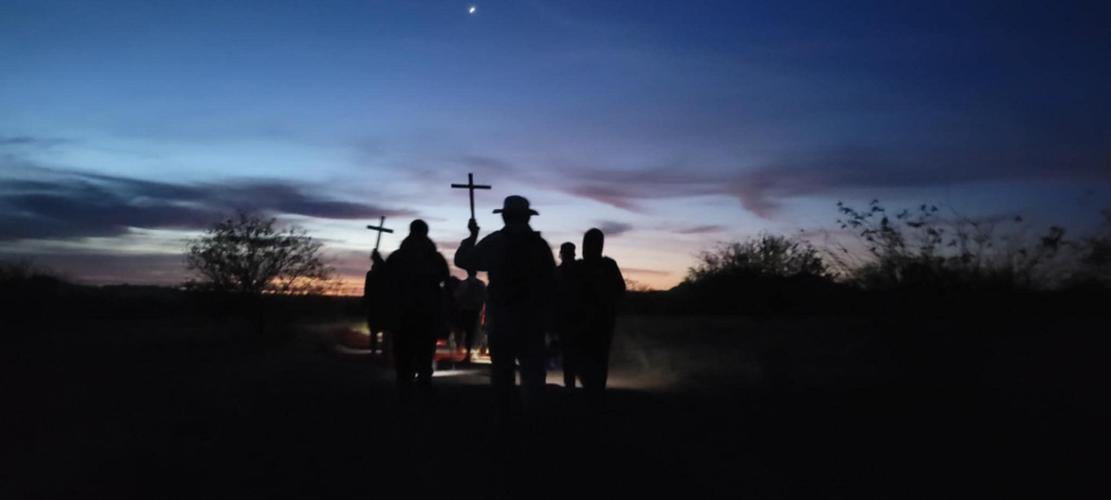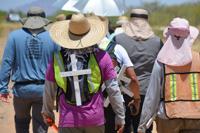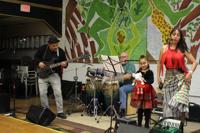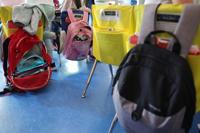Tucson, Arizona – With high temperatures during the day and cold at night, 43 people walked for seven days amid the silence of the dangerous Sonoran Desert to remember the countless migrants who have lost their lives in that area.
“I do it to bear witness, to raise my voice, to draw attention to the fact that thousands of people have died crossing the border,” said Jamie Wilson, who participated in this year’s trek.
The group gathers every year in May to walk 75 miles from Sásabe, Sonora, Mexico, to Tucson, Arizona. In 2025, the Migrant Trail marked its 22nd anniversary, starting Monday, May 26 to Sunday, June 1, according to Saulo Padilla, one of the organizers of the trek.
The Sonoran Desert spans approximately 120,000 square miles, extending from southeastern California and southwestern Arizona in the United States to northwestern Sonora and a significant portion of Baja California in Mexico.
From May 2024 to May 2025, the remains of 154 migrants have been found in that area, Padilla said, citing data from Humane Borders. Padilla is the coordinator of the Mennonite Central Committee's immigration education program.
Wilson traveled from New Mexico to Tucson to participate in the walk. She has walked for 11 years and has pledged to walk every year as an act of protest until the deaths of migrants in the desert and along the entire border end, she said.
“I would like all the people who want to come, who are escaping difficult situations, to have the same right to enter here freely, obviously with a legal process, but through a humane process,” she said.
The group walked through parts of the desert where it is common to find dehydrated migrants, injured from falling off cliffs. Some migrants are fortunate enough to only end up with blisters on their feet, as happened to several members of the group who made the trek, including Padilla.
Unlike the migrants who navigate the desert, the group was accompanied by an entire team securing their path by delivering food in one vehicle, pulling a trailer with everyone's suitcases and pulling two portable toilets in another — nothing like the reality of a migrant crossing on foot.
The group walked during the day, starting at dawn. Every so often, they took a break, and each day they had a campsite to sleep in.
Lourdes González, from the Casa Clínica Lulú migrant shelter located in Reynosa, Tamaulipas, Mexico, participated in the walk for the first time to draw attention to the deaths occurring in the desert and to call on legislators to pass laws that truly help migrants, because they often don't know or understand why they make the difficult decision to leave their homeland.
Unknown yet present
On Friday, the fifth day of the walk, a high temperature of 100°F was recorded. The group walked along Highway 286, which leads from Sasabe to Three Points, a Census-designated area southwest of Tucson. They walked in single file, carrying crosses, some bearing the names of migrants who died in the desert and others bearing the word "unknown." They carried hats or umbrellas, water bottles in hand and backpacks on their shoulders.
Upon reaching Three Points, they continued along Ajo Way for approximately two miles until they arrived at a church, where they rested and spent the night.
An organizer conducted a roll call as participants settled on the church grounds. A person's name was called out, and the group would respond with a loud "present." Then the organizer would shout out, "Unknown," and the group would respond, "present,” symbolizing their recognition of migrants who have passed away and have yet to be identified.
"We wonder how people get through here, how the countrymen and countrywomen manage to cross these places," Padilla said on the fifth day of the walk.
Along the way, they saw clothing and some artifacts that migrants had left behind, which made them realize that there are still people crossing, sacrificing their lives to get to the U.S., Padilla said.
From 1990 to date, the remains of 4,384 people have been found, according to figures from Humane Borders.
When asked about the main cause of death, he responded that the information they've reviewed from medical examiner reports is that it's due to dehydration, but also because of extremely low temperatures at night, in addition to other dangers from animals in the desert.
In 2001, the remains of 79 people were recovered on the Arizona border. By 2005, that number had surpassed 200, and since then, almost 20 years later, the militarized border remains as deadly as ever, Wilson explained.
In January, at the start of President Donald Trump's administration, the deployment of 1,500 troops to the southern border of the United States with Mexico was announced. In April, the government ordered the U.S. Army to occupy federal lands and arrest unauthorized border crossers.
On Sunday, the group arrived in Tucson at John F. Kennedy Park, where various organizations were waiting, as they do every year, to celebrate their arrival.
The 43 people walked not only where bodies die, but where dreams die as well, where families disintegrate — the desert, where the climate and terrain are unforgiving.
This walk doesn't end with the deaths of migrants. They are remembered with a roll call and honored. Those who died in the desert couldn't reach Tucson, but the group did, in their memory.
César Barrón is an independent reporter covering the transnational communities of Ambos Nogales. He has over 20 years of experience covering the Sonoran communities.
















(0) comments
Welcome to the discussion.
Log In
Keep it Clean. Please avoid obscene, vulgar, lewd, racist or sexually-oriented language.
PLEASE TURN OFF YOUR CAPS LOCK.
Don't Threaten. Threats of harming another person will not be tolerated.
Be Truthful. Don't knowingly lie about anyone or anything.
Be Nice. No racism, sexism or any sort of -ism that is degrading to another person.
Be Proactive. Use the 'Report' link on each comment to let us know of abusive posts.
Share with Us. We'd love to hear eyewitness accounts, the history behind an article.